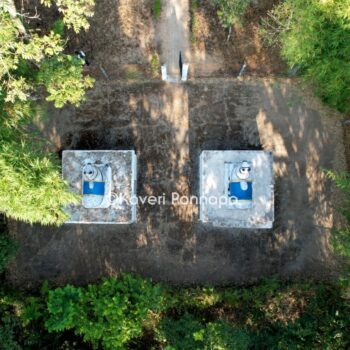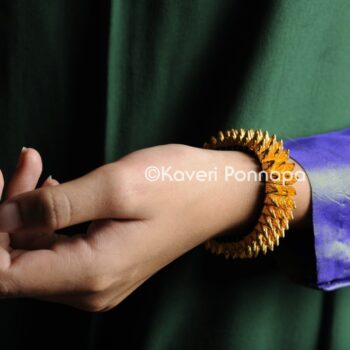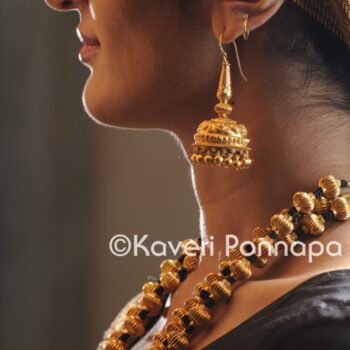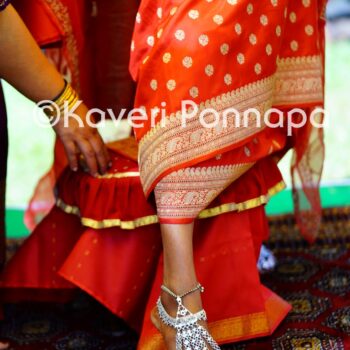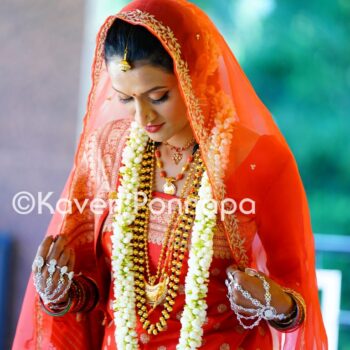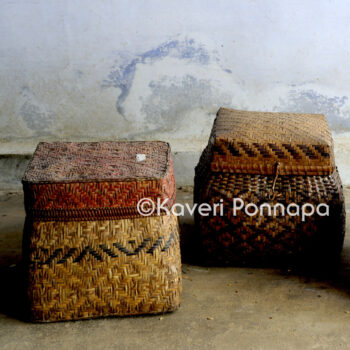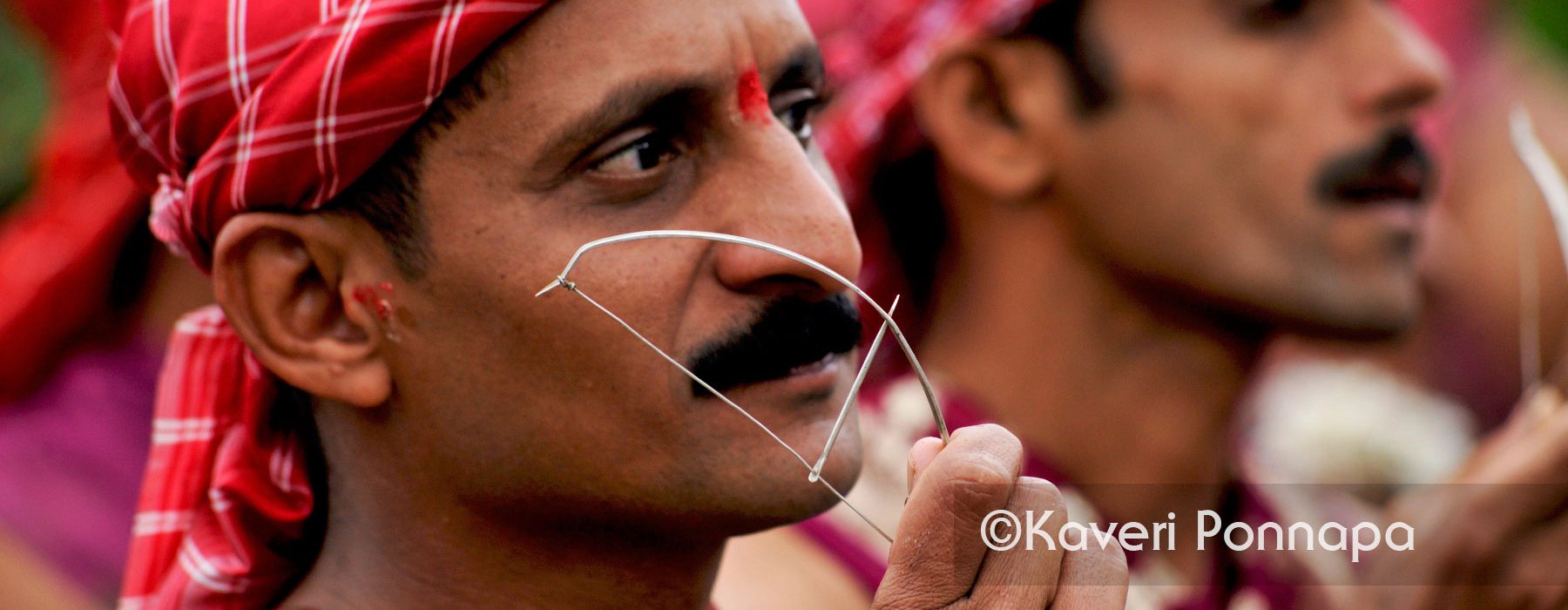
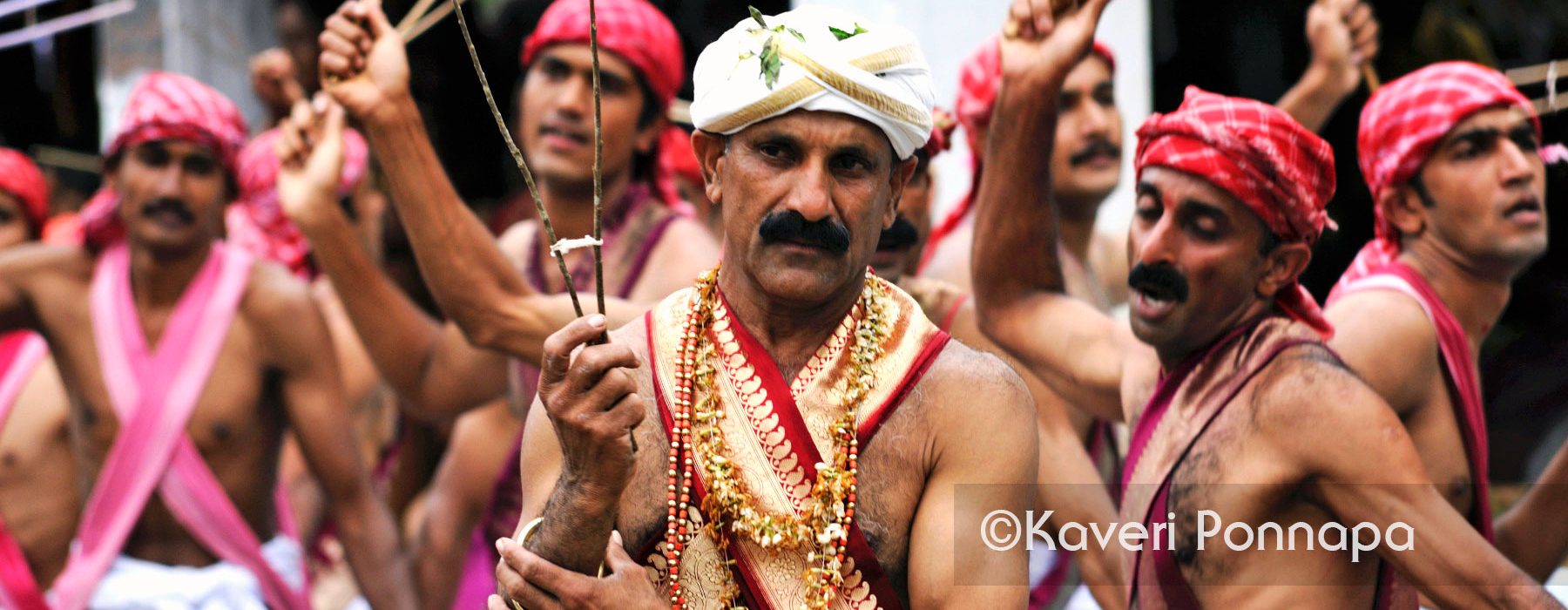
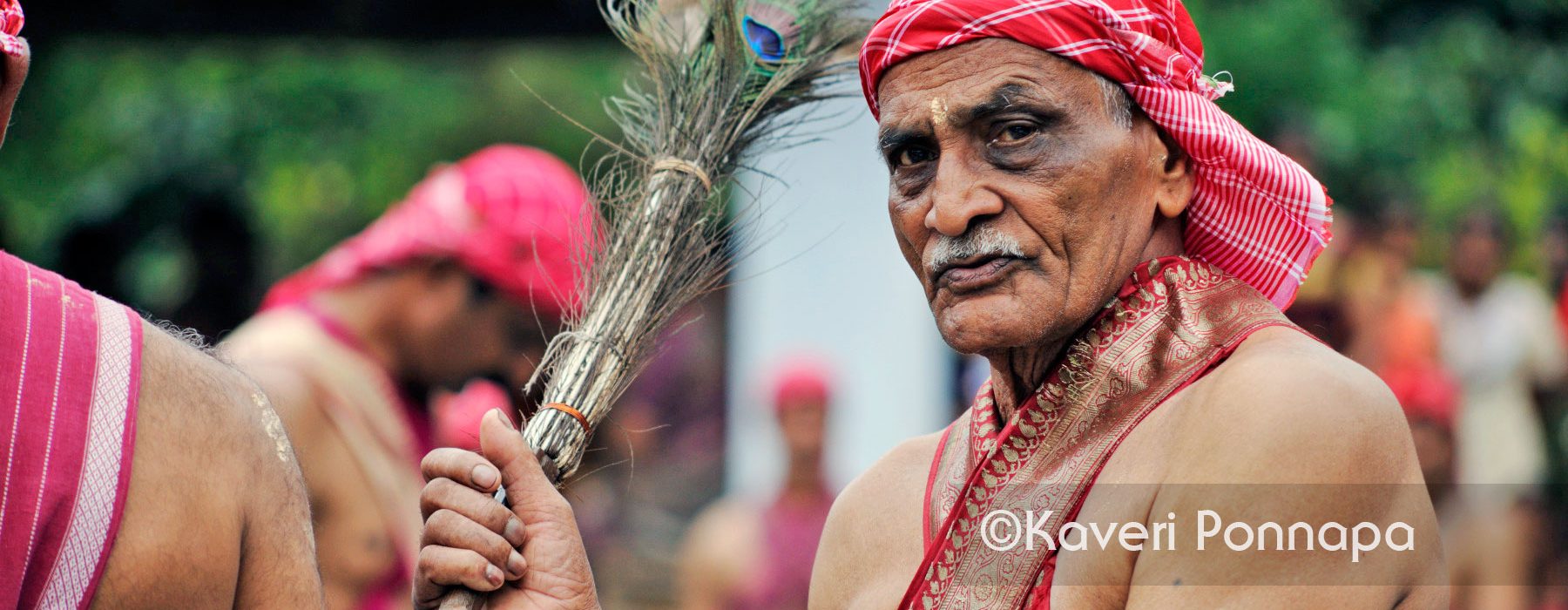
Welcome to The Vanishing Kodavas, an ongoing exploration of the culture, heritage and history of the Kodava people…
READ MORE….
The funerary complex of the Lingayat Rajahs of Kodagu located at the hilltop north of Madikeri town also houses the final resting place of two...
A flexible gold bracelet strung on black cord with a screw attachment at the clasp, the paunchi is yet another instance of the organic shapes...
The Jomale or Jomaale, a double strand of grooved, lac-filled gold beads resembling the Indian gooseberry, strung on black cord, is an essential part of...
Kasara or Kaasara ( also referred to as Kaalpilli ), worn on the feet by a Kodavathi bride on the murtha day consists of five...
Silver ornaments which are part of the Kodavathi bride’s jewellery include the kaisara ( also referred to as kaipilli ), an assemblage of rings for every...
Poliya is a lidded basket made of woven cane (toore). It has a specific use at a Kodava wedding ceremony, where it is filled with...



